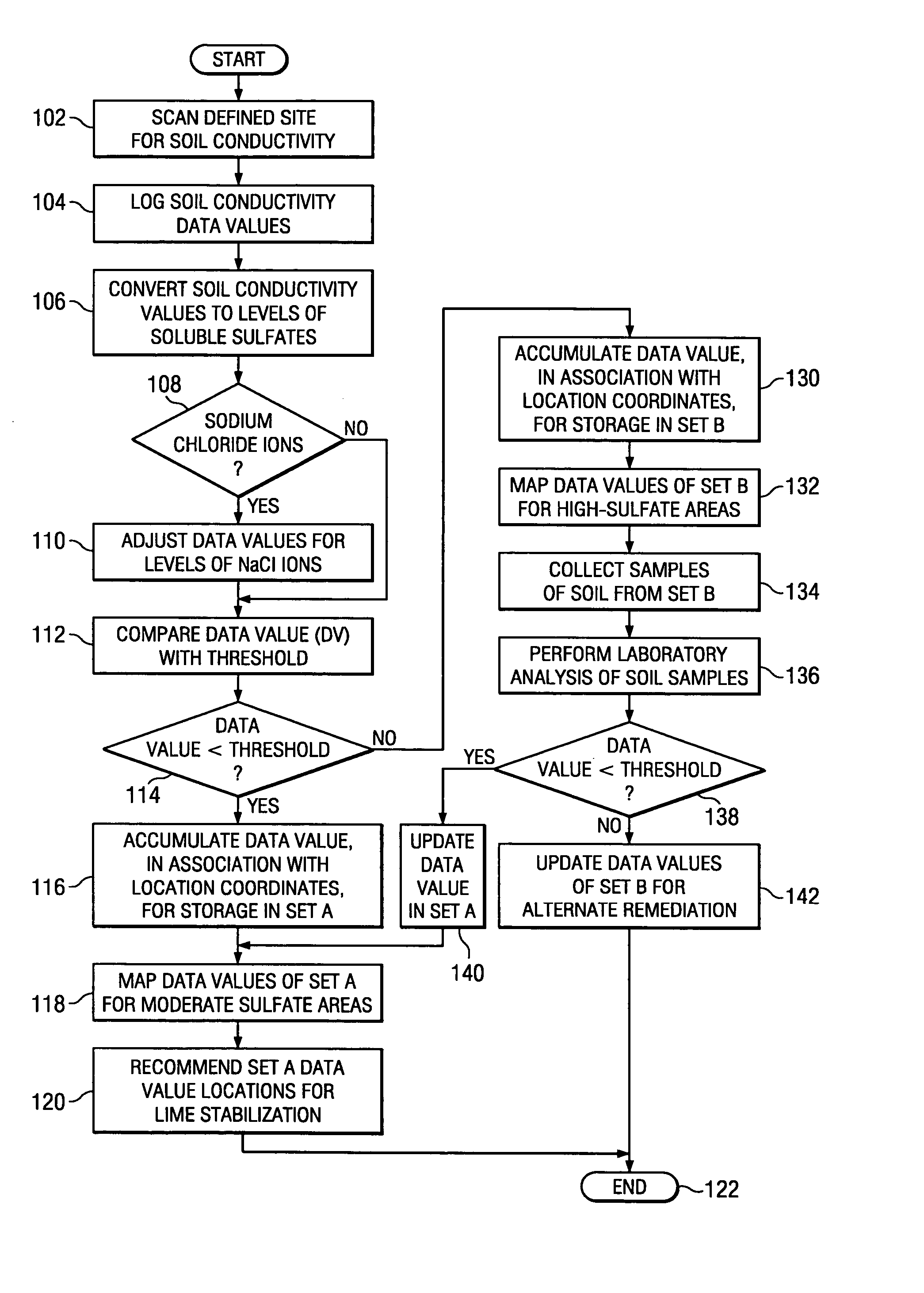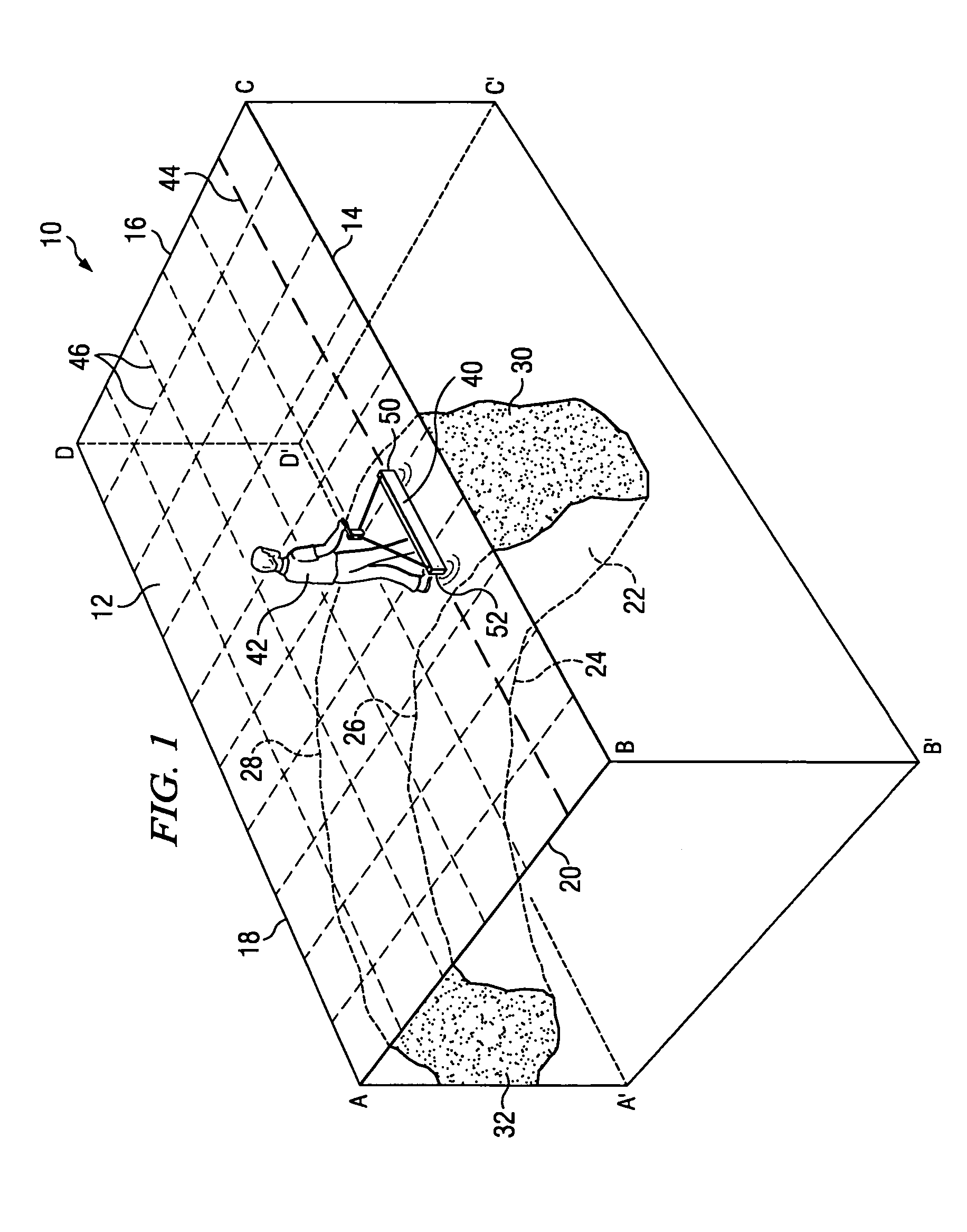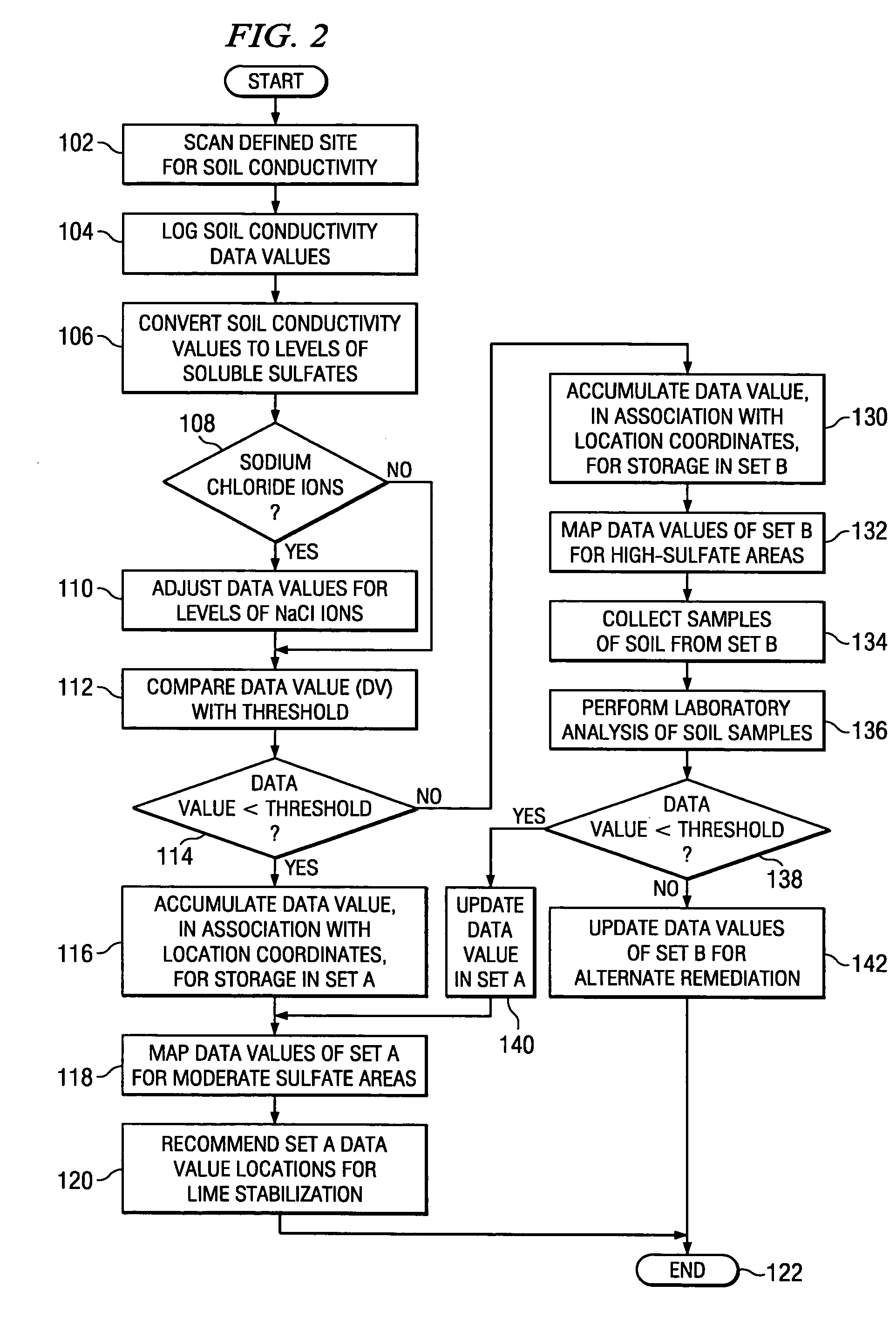Method of selecting a soil stabilization protocol for a construction site
- Summary
- Abstract
- Description
- Claims
- Application Information
AI Technical Summary
Benefits of technology
Problems solved by technology
Method used
Image
Examples
Embodiment Construction
[0012] Referring to FIG. 1, there is illustrated a pictorial view of a cross section of a construction site 10 having a seam of high sulfate concentration near the surface of the site in a clay-bearing soil and an operator performing a soil conductivity survey according to the method of the present invention. The drawing is not to scale, the depth dimension being exaggerated for clarity. The construction site 10 has a surface 12 that is bounded by borders 14, 16, 18 and 20, which intersect at the corners A, B, C and D, forming a rectangular shaped site 10. A portion of the depth of the construction site 10 is indicated by the corners A′, B′, C′ and D′, which respectively locate the corresponding points beneath the surface 12 of the site 10 directly below the corners A, B, C and D. A seam 22 of sulfate-rich soil runs through the site 10 along and just below the surface 12, passing across the border 20 and the border 14 as it curves across and through the site 10. A cross-section 30 o...
PUM
 Login to View More
Login to View More Abstract
Description
Claims
Application Information
 Login to View More
Login to View More - R&D
- Intellectual Property
- Life Sciences
- Materials
- Tech Scout
- Unparalleled Data Quality
- Higher Quality Content
- 60% Fewer Hallucinations
Browse by: Latest US Patents, China's latest patents, Technical Efficacy Thesaurus, Application Domain, Technology Topic, Popular Technical Reports.
© 2025 PatSnap. All rights reserved.Legal|Privacy policy|Modern Slavery Act Transparency Statement|Sitemap|About US| Contact US: help@patsnap.com



